Vipers according to some people are some of the most scary creatures on earth; in fact these are poisonous snakes.
They possess fangs, which serve as hypodermic, with which they inject venom and this defines them.
The sixteen varieties of vipers that can be found worldwide will be compared in this article:
-
- Fea’s Vipers
- White-headed Fea Vipers
- Snouted Night Adders
- Lichtenstein’s Night Adders
- West African Night Adders
- Lined Night Adders
- Rattlesnakes
- Crossed Pit Vipers
- Velvet Pit Vipers
- Southern American Bushmasters
- Hump-nosed Vipers
- Sumatran Pit Vipers
- Salazar’s Pit Viper
- Russell’s Vipers
- Common European Adders
- Horned Vipers
1. Fea’s Vipers
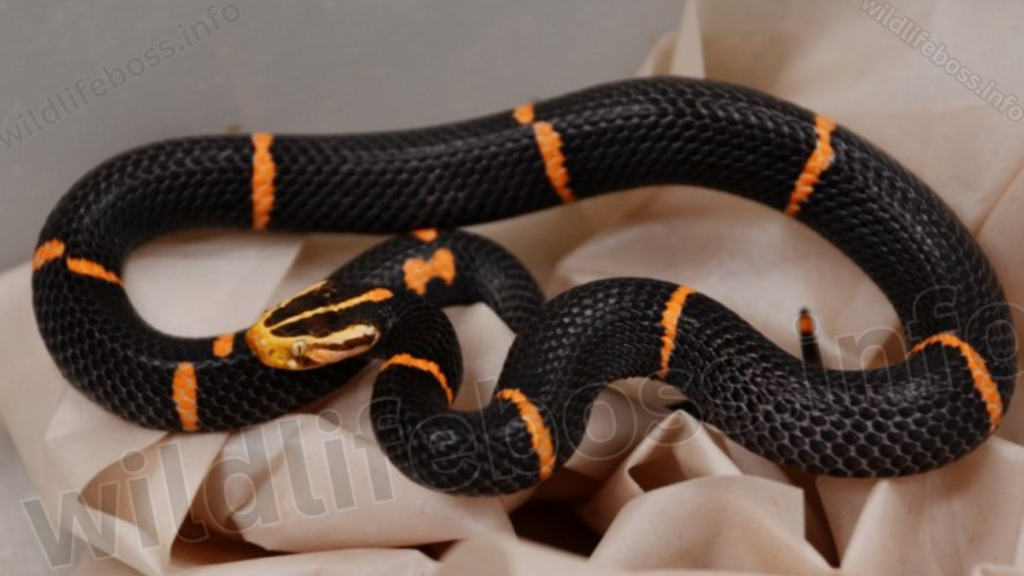
Scientific name: Azemiops feae
Fea’s vipers are one of the two endemic species of the Azemiops genus found in Asia. Although the population of these snakes is not in danger, little is known about them because they are elusive and hardly sighted.
In addition to portions of Vietnam and Myanmar, they can be found in areas of South and Central China. There, they primarily inhabit forests and open spaces, hardly ever venturing into human habitat.
The biggest of these vipers in China can reach a length of 30 inches, but they are not very big. Their head is completely cream colored, and their body is black with a few cream bands, making them easily identifiable.
Sea also: 10 Amazing Types of Water Snakes(With Photos)
2. White-headed Fea Vipers
Scientific name: Azemiops kharini
The color of the head is the single distinguishing feature between these two snakes, which are the only species in the genus Azemiops. Snakes with darker heads frequently have white stripes across their heads, but white-headed Fea vipers have nearly all white heads.
Similar to their relatives, these snakes are incredibly well-hidden and infrequently sighted. Since they hunt solely at night, they are primarily nocturnal. In lab settings, this was also shown that snakes would only eat after dark.
3. Snouted Night Adders
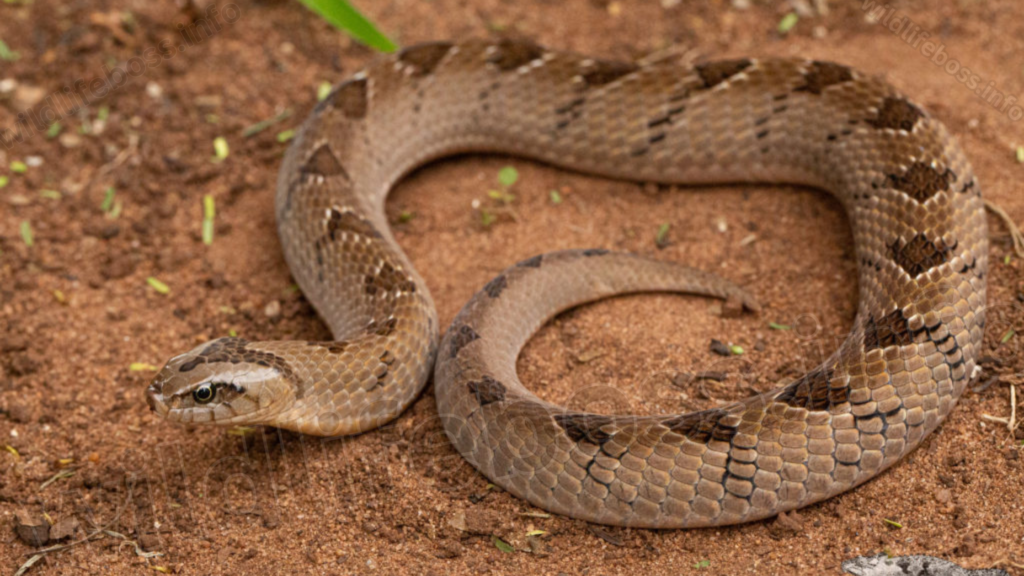
Scientific name: Causus defilippii
Snouted night adders are small snakes that seldom reach a length of 20 inches and are mostly found in eastern and southern Africa. Their very noticeable snout, which frequently points skyward, is the source of their name.
Savannas and woods are home to these light brown snakes, which typically hide in wet regions during the day to avoid the heat. In order to hunt, they emerge from their hiding places at night. Snouted night adders are excellent swimmers and eat frogs.
They may bite swiftly, yet little is known about their venom, so they hiss and blow themselves up to frighten predators. In Africa, these vipers have been linked to relatively few deaths (and bites in general) despite the lack of an antivenin.
4. Lichtenstein’s Night Adders
Scientific name: Causus lichtensteinii
To avoid any misunderstandings, neither Lichtenstein nor any other European nation is home to this species. It bears the name of German herpetologist Martin Hinrich Lichtenstein. Africa’s western, eastern, and central regions are home to it.
These vipers have expanded to islands on lakes and are renowned for their ability to swim. They typically reside in wetlands and woodlands, where they eat small mammals and amphibians. Apart from that, not much is known about their feeding habits or venom.
5. West African Night Adders
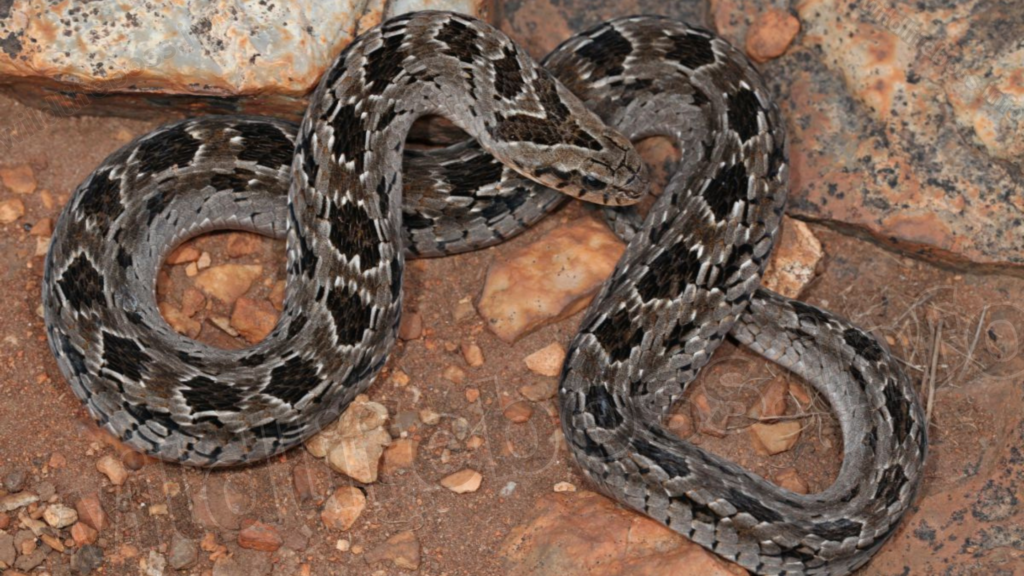
Scientific name: Causus maculatus
These snakes, which are found in western and central Africa, often live in savannahs and forests, but they also appear to be able to survive in somewhat desert environments. Totally disregarding the name, these adders are active day and night times.
Their venom is weak for humans and typically only causes localized pain and swelling, and they primarily eat little frogs. They are identified by black patches running down the snake’s brown back, and they hardly ever get larger than 28 inches.
6. Lined Night Adders
Scientific name: Causus bilineatus
This viper is restricted to southern central Africa and typically lives in marshes and woods, where it primarily eats toads and frogs. They are typically brown, and their maximum length is 26 inches.
Most terrestrial snakes that remain near the ground are night adders. As a result, they are often dark in color, which helps them blend in with the soil.
These specific night adders can be identified by the two pale stripes that run the length of their bodies.
7. Rattlesnakes
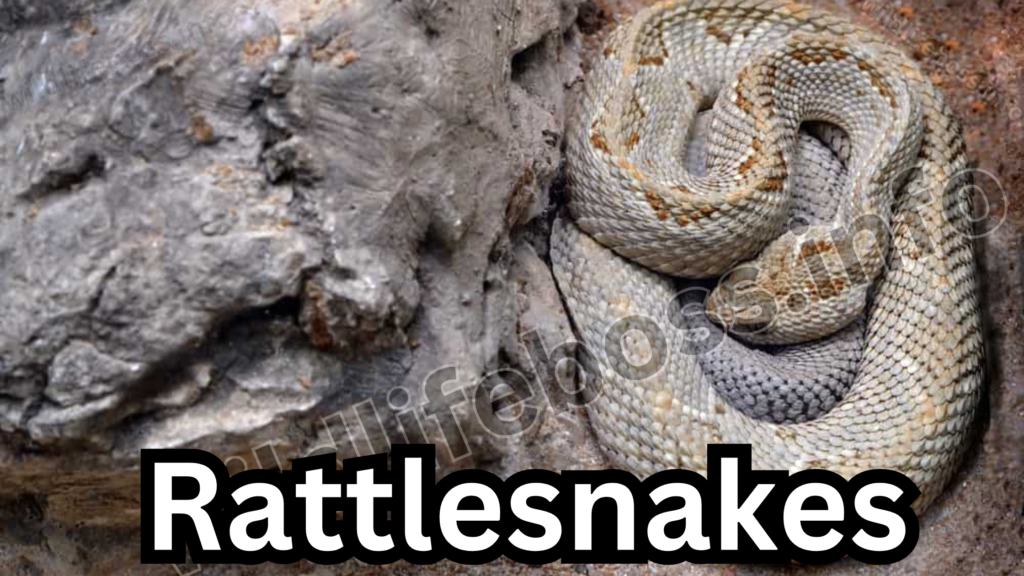
Scientific name (genera): Crotalus & Sistrurus
These 36 distinct species of rattlesnakes have been identified and can be found in Canada and even Argentina. These snakes when encountered in their natural habitat should be avoided purely because they are highly venomous meaning they will be very dangerous.
The rattle seen at the end of the tail is unique to the rattlesnake subspecies. Rattlesnakes have an auditory signal that warns a predator of their willingness to defend themselves by shaking their rattle.
Although these are vipers that are reputed to hunt sting their countrymen in the USA, these snakes are not always antagonistic and would as soon scuttle under a stone as fight. Most of the bites happen if a person can identify the snake but refuses to leave it alone. The good news is antivenin is available and therefore fatalities from rattlesnake bites are comparatively low.
In terms of hunting, rattlesnakes are exceptional in their capacity to sense heat. Because they can hunt at night without using their eyes, this enables them to do so. They can pick up on even the smallest temperature changes because they merely sense thermal radiation.
Now, we’ll see that each pit viper has varying degrees of heat-sensing ability.
8. Crossed Pit Vipers
Scientific name: Bothrops alternatus
The largest known (albeit unconfirmed) examples of the venomous South American snakes, known as crossed pit vipers, are over six feet long. Although the color scheme varies from snake to snake, all of them have a crisscross pattern on their backs.
North Argentina, Uruguay, Paraguay, and southern Brazil are home to these kinds of vipers in South America. They often inhabit woodlands, marshes, and swamps; it is not unusual for them to stray into human environment.
Even though they have a reputation for being completely deadly, very few bites are fatal if prompt medical attention is given.
9. Velvet Pit Vipers
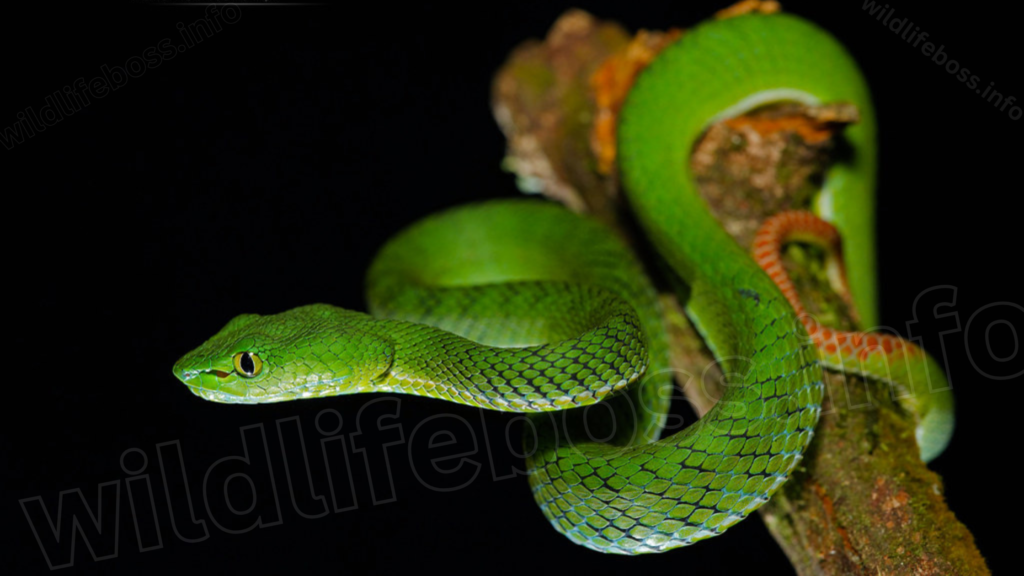
Scientific name: Bothrops asper
In every way, velvet pit vipers are thought to be the best available. They are long (up to 8 feet) and hefty (up to 13 pounds), and their enormous fangs make envenomation quite easy. Typically, they have darker triangles on the back and are dark brown.
Eastern Mexico and a few Central American nations, including Guatemala, Belize, Honduras, Costa Rica, Nicaragua, and Panama, are typically home to these snakes. These venomous vipers are typically found in woodlands.
When people approach them, they are completely unpredictable; they will typically run away, but they can simply turn around and choose to attack. They move quickly, therefore it’s critical to get at a safe distance in a timely manner.
Their venom is very strong and can easily cause necrosis and amputation, but if treated appropriately, it can prevent death.
Sea also: 6 Amazing Types of Garter Snakes in Kansas (With Photos)
10. Southern American Bushmasters
Scientific name: Lachesis muta
These snakes are located in Trinidad and South America. The longest vipers in the western hemisphere, they can reach a maximum length of 8 feet. King cobras and black mambas are the only longer venomous snakes.
Because of their dark and black appearance, they are nearly undetectable in woods and have excellent environmental adaptations. Their venom was formerly thought to be mild, but it was discovered that they are under a lot of stress in captivity, which is why their milked venom isn’t as strong as that of snakes in the wild.
Children and those with long-term illnesses are typically the victims of their venom, which is now recognized to be lethal.
11. Hump-nosed Vipers
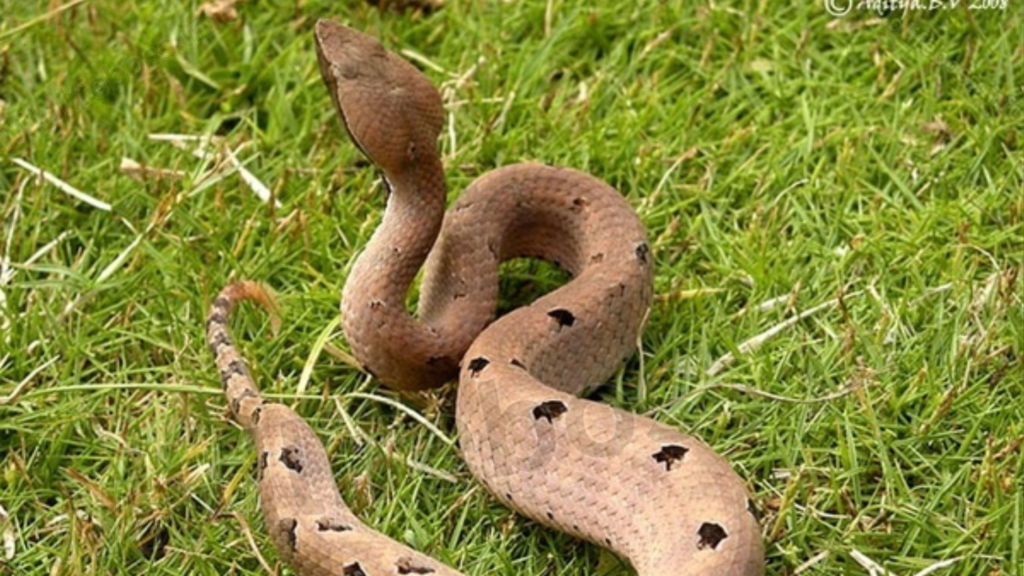
Scientific name: Hypnale hypnale
These vipers that are endemic to Sri Lanka and India have a conspicuous raised area on the face just above the mouth. They often possess black bands on its back and it is in gray color.
They are only found in coffee gardens and extensive forests; often moving at night and early in the morning. It vibrates when threatened and that is like the rattle in rattlesnakes.
In Sri Lanka, snake bites are most commonly caused by these types of vipers. Even though there is antivenin available their bite can be fatal to adult man.
12. Sumatran Pit Vipers
Scientific name: Trimeresurus sumatranus
Sumatran pit vipers are arboreal vipers which means that part of their body is adapted to living in trees and have evolved to turn green in colour. Their belly is usually of yellow color.
Such types of green vipers that dwell in forests are active during the night period of the day. Their primary diet consists of small animals like lizards, birds, frogs, and small mammals.
These snakes are considered very dangerous due to the fact that they have long (greater than 0.4 inch) fangs through which they can deliver huge volume of venom per sting.
13. Salazar’s Pit Vipers
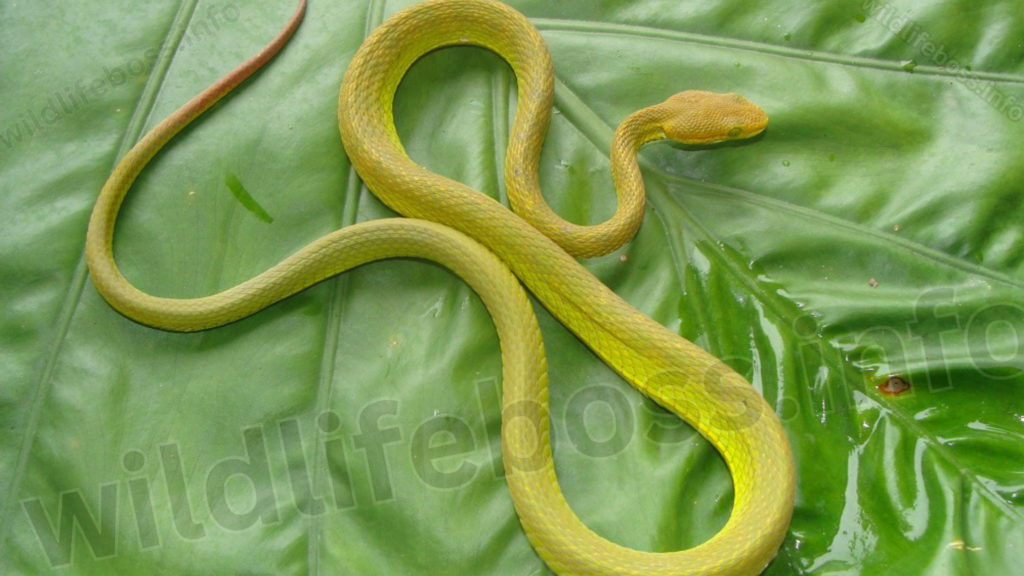
Scientific name: Trimeresurus salazar
In India, this kind of viper was very recently discovered. It’s interesting that it was named after Harry Potter novelist Salazar Slytherin. It has a little paler belly and is noticeably green.
They have a distinctively triangular head and measure slightly under 20 inches in length. In India, these vipers are arboreal species that are hard to spot since they live on trees. The majority of their food comes from small animals.
14. Russell’s Vipers
Scientific name: Daboia russelii
Native to India, Sri Lanka, Nepal, Pakistan, and Bangladesh it is one of the world’s deadliest snakes even according to recent research. The patterns on their otherwise brown back are smooth and can be identified by a black coloration.
These snakes are frequently found in both rural and urban human areas because rats accompany people, which frequently results in bites. Although they are not particularly hostile, they will bite if they are touched or trodden on.
Their venom is extremely powerful and can kill a person with ease. The bite can result in serious health problems even if the sufferer survives.
15. Common European Adders
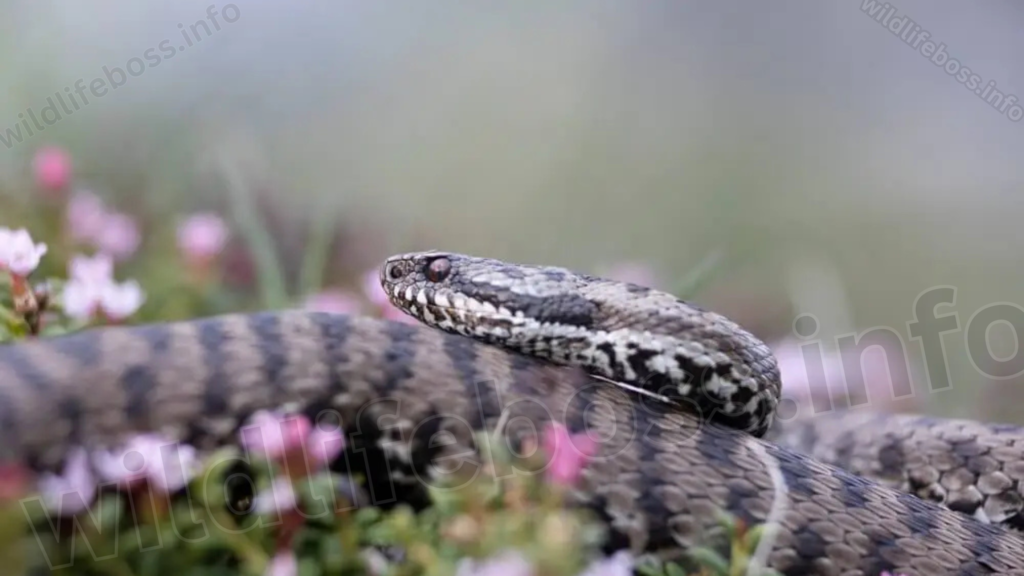
Scientific name: Vipera berus
They live in a wide range of habitats and mostly eat small animals including frogs, mice, and birds. The black zigzag pattern on the back of these snakes, which is typically light brown, makes them clearly identifiable.
There are very few people that are completely Black.
16. Horned Vipers
Scientific name: Vipera ammodytes
Due to the long fangs and the very strong venom these snakes are considered the most dangerous in Europe. In sections of Turkey and Southeast Europe these animals are often seen sitting on tree branches and as they are characterized by a horn on their snout it is impossible to confuse them for any other animal.
Fortunately, the majority of bites originate from such snakes come after the snake has been stepped on. Much as they will try to escape if provoked, they are capable of biting if an infringement is made on their space.
Conclusion:
Wild vipers are very dangerous poisonous snakes which one should not come across when ever they are out alone. Their sting which is more of a protection than an attack tool has evolved over millions of years to be capable of prostrating animals far bigger than man.
Luckily, most vipers do not strike unless provoked, and most assaults occur when they are trodden on by accident or handled improperly.

Pingback: 7 Best Different Types Of Scorpions (Amazing Information) - Wildlifeboss.info